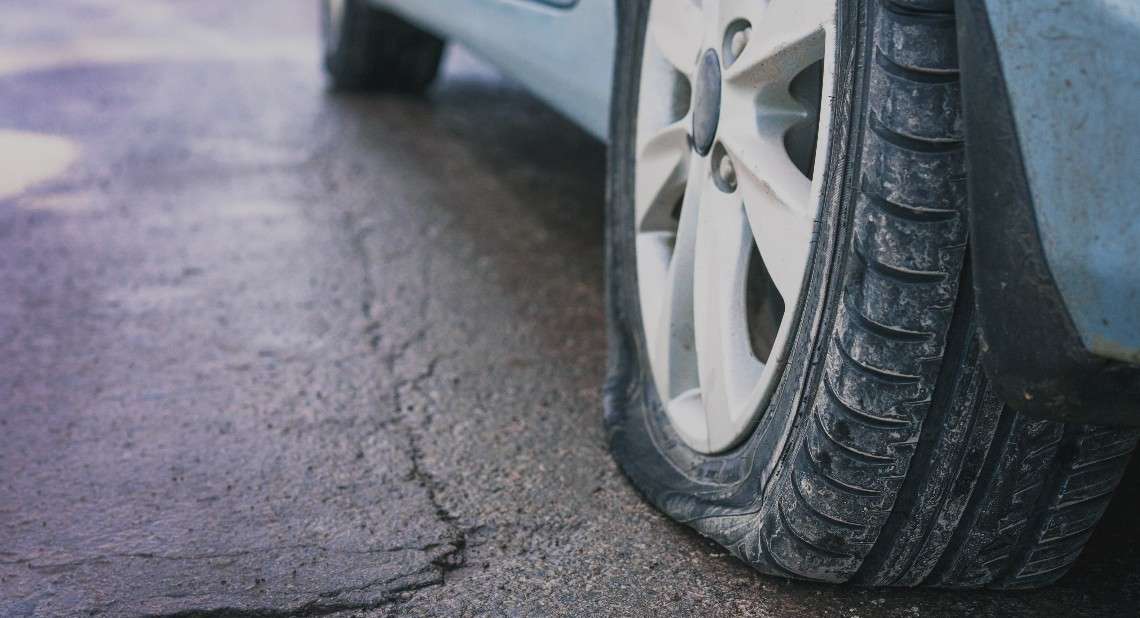As a Motability Scheme customer you get to lease a new car every three years with servicing and breakdown included, but accidents do happen so we’ve put together a guide on how to prevent the most common car issues!
Car emergencies come in various forms and are always unpleasant and unexpected – from the flat tyre and dead battery that stop you in your tracks, to the smoking engine that makes it impossible to drive.
Many car emergencies arise more commonly in older cars, the result of increased wear and tear. As a Motability Scheme customer you get to lease a brand new car every three years, so that should be less of a problem. But what should you do when or if an emergency suddenly and unexpectedly strikes?
The following advice covers three of the most common issues.
1. A flat tyre
The very common and always annoying flat tyre can be caused by any number of reasons. Often you’ll have driven over sharp objects such as nails or glass, or over potholes, uneven ground or unexpected debris that pierces the tyre.
Kwik Fit
As a Motability Scheme customer, your lease includes tyre repair and replacement from Kwik Fit. You can take your Motability Scheme vehicle to any one of the 600+ Kwik Fit centres across the UK and the team will carry out a full safety check and replace any tyres in need of attention at no extra cost.
If it’s more complicated, it could also be caused by damage to your valve stem – the small protrusion from your tyre that you use to inflate it – and air can escape if it’s damaged or corroded. It could also be a leaking tyre bead – which is the edge of the tyre that rests on the rim. And it could be caused by over-inflating your tyres, which can cause a blowout. If that happens while you’re driving, try to keep calm, keep a firm grip on the steering wheel, slow down gently and avoid harsh, sudden braking.
Generally speaking, the older a car is and the more miles it has on the clock, the more likely its tyres are to be showing wear and tear – making them more susceptible to picking up damage.
While you can’t avoid an unexpected flat, you can do several things to keep your tyres in the best possible condition. Always drive cautiously and be aware of the road ahead, allowing you to steer around any visible debris. Regularly check that your tyre pressure is correct – the details are usually listed on the inside of the driver’s door. And avoid overloading your car and putting excess pressure on the tyres. Finally, and crucially, make sure your car is regularly serviced – it’s included in your Motability Scheme lease and can ensure your tyres stay in premium condition.
2. A dead battery
A flat or faulty battery is often caused by lights being left on, or by something in the electrical system causing the battery to drain, or even by a faulty battery that no longer holds its charge. Most batteries will last somewhere between five and seven years before they need to be replaced, and with Motability Scheme customers able to change their car every three years, a defective battery shouldn’t be an issue.
Often – and increasingly common in these times of lockdown – inactivity can also be a cause of a dead or drained battery. Going for a regular drive will help the battery recharge; aim for 30 minutes minimum to get the levels back up. If you don’t use your car very much, ‘battery conditioners’ and ‘trickle chargers’ can provide a much-needed charge, though they won’t fully charge a flat battery.
However, if you do turn the key or press your fob and the engine refuses to start, several checks can help confirm if it is indeed the battery. First, turn the engine on again, but this time with the clutch pushed down gently. This takes some pressure off the starter motor and battery and can make the difference. If this doesn’t work, check the basics: do you have fuel in the tank and if you use a key fob, are its batteries actually working?
If you can’t physically turn the ignition key, double-check that a wheel isn’t simply jammed against the kerb, which in turn can jam the steering lock. If this is the case, turn the wheel slightly from side to side while carefully turning the key back and forth at the same time until the lock frees off. If none of that works, switch off all electricals such as heaters and the stereo when you start the car – as well as when you park it – and try the engine again.
If none of the above works and you can only conclude that the battery is flat, it will almost certainly need a jump start. Happily, as a Motability Scheme customer you are covered for breakdown assistance by RAC Motability Assist for the whole of your lease – call 0333 202 1878 from your mobile for expert assistance.
3. An overheating engine
Smoke billowing from the bonnet of your car is always alarming. Usually it’s the result of the engine overheating, something that can occur more often in particularly hot weather but also in colder conditions. It can be caused by any number of issues that vary in size and severity, including a cracked engine block in rare but extreme cases. Happily, the most common cause of smoke is a coolant leak or a blocked thermostat, both of which are connected and relatively easily remedied.
In basic terms, when your engine is running, it makes power but it also creates heat. That’s when the engine’s coolant comes in – it should circulate through the engine and absorb heat, keeping everything at the correct temperature. However, if the thermostat – which regulates the flow of coolant – is blocked, the coolant cannot circulate around the engine, so the engine overheats.
To prevent problems, make sure your vehicle’s cooling system is checked for potential leaks and have the hoses, thermostat and coolant checked during servicing. In between services, check regularly that your coolant level is correct. To do this, lift the bonnet and look for the (usually) translucent white coolant reservoir, which should have a hose connecting it to the radiator – it should have markings to show the level of coolant required. Often, a thermostat gets blocked when debris builds up around it, often the result of coolants being mixed and contaminated.
In the worst case scenario, if your vehicle overheats while you’re driving, safely pull over to the side of the road and turn off the engine immediately. If you can, lift the bonnet to allow the heat to dissipate more quickly, but be aware that the bonnet can get very hot. At the earliest opportunity, call the RAC Motability Assist on 0333 202 1878 from your mobile for assistance.
Your Motability Scheme lease runs for three years and includes servicing, maintenance, breakdown cover, tyre repair and replacement and windscreen repairs. Please click here for further details on how the Scheme works.
Related Articles
What does fuel consumption mean?
![]()






